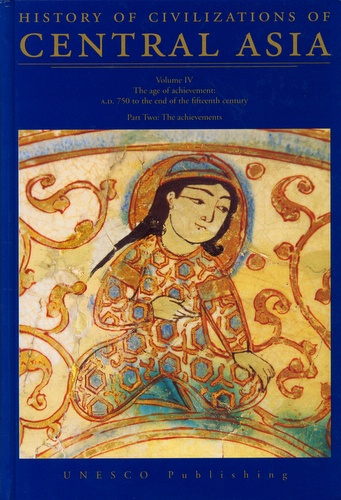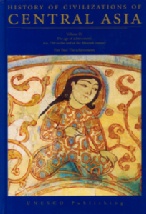History of Civilizations of Central Asia
Volume IV - The age of achievement A. D. 750 to the end of the fifteenth century
Part Two: The achievements
Readers will discover through this six-volume work cultures that flourished and vanished from the dawn of civilization to the present time and how the history of the ancient and medieval world was shaped by the movements of peoples in this heartland of Eurasia, stretching from the Caspian Sea to the borders of China.
During the fourteenth and fifteenth centuries, Islam and Islamic culture achieved dominance over all its rivals in Transoxania and the area to its north and also established a firm footing in north-western India and southwards through the subcontinent.
Editors:
Summary:
Volume IV, Part One, of this History covered the dynastic, political and military history of Central Asia. Part Two covers the cultural achievements of the various peoples of this immense region: arts and crafts, languages, scripts, literature, architecture, music, science, medicine and technology. The borders of the Central Asian heartland of steppes, desert and forests fluctuated over the period 750–1500. At first, the Islamic faith and culture had to compete with older established faiths in Central Asia such as Zoroastrianism, Manichaeism, Christianity and Buddhism. For over four centuries, the advance of Islam was gradual, but it was to have far-reaching consequences as it extended north-eastwards. During the fourteenth and fifteenth centuries, Islam and Islamic culture achieved dominance over all its rivals in Transoxania and the area to its north and also established a firm footing in north-western India and southwards through the subcontinent.
Thus arose a unique moment in history for the interchange of ideas and aspects of material culture, in which Central Asia acted as an intermediary. The faiths of the West and the South, of the Near East, of the Iranian world and the Indian, now had an impact on the lands further east and north. In the reverse direction, commerce, highly skilled crafts such as ceramics, and technological achievements such as silk production and woodblock printing, spread from China to the Islamic world and thence to Europe.



